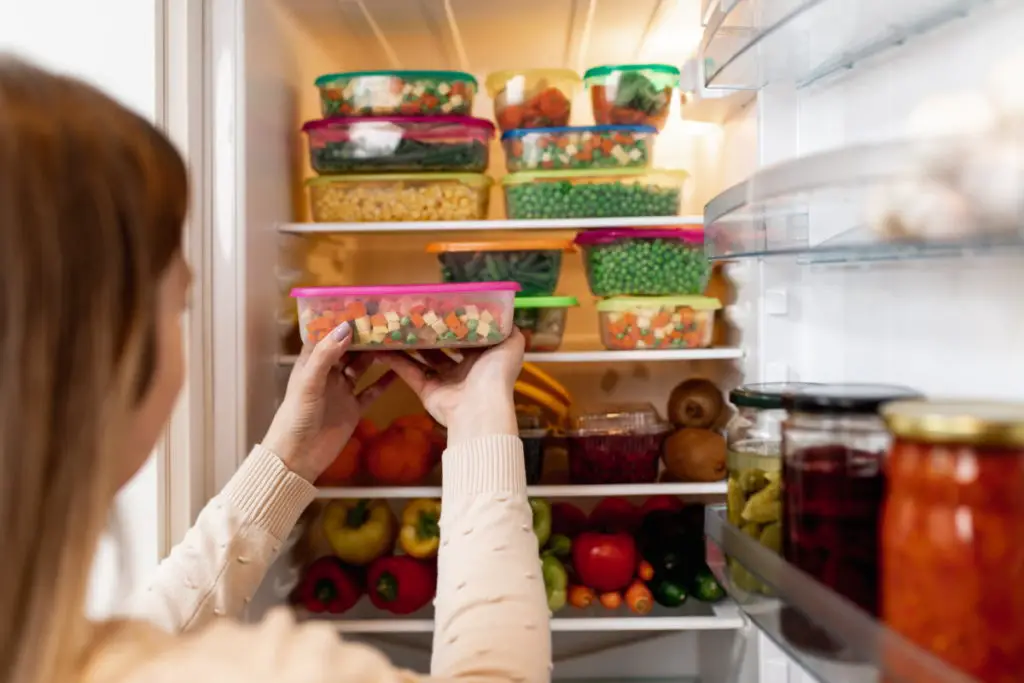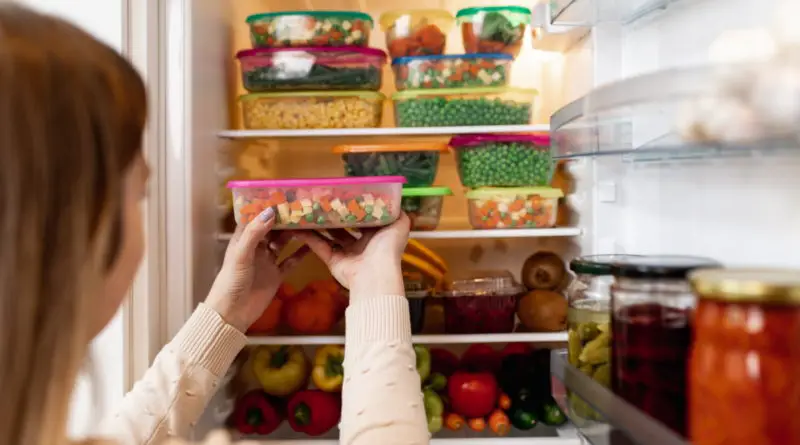4 Tips for Storing Leftovers
Disclosure: This post contains affiliate links. For more information see the Affiliate Disclaimer.

How do you manage storing leftovers?
It’s not unusual to have a lot of leftovers during holiday seasons, such as Thanksgiving and Christmas.
What about the other days?
I don’t mind leftovers for several reasons.
Leftovers can save time. And, a little extra free time is always good.
Leftovers can also save you money, by not having to make another complete meal.
And, let’s face it, certain meals taste better the next day.
It is a common belief that you need to completely cool down food before putting it in the fridge. This is not true.
This was the case with older fridges as their cooling systems could not handle the heat rapidly enough. Modern fridges are more than equipped to deal with this.
The faster you cool the food down the less likely you will get any kind of bacteria build-up. If you are cooling your food down first, do not let it sit for more than two hours before getting it into the fridge. Leaving your food out longer will, again, just be increasing the chance of bacteria build-up.
The best practice for storing leftovers is to get that food in the fridge as soon as possible, even if it is still hot.
Do your best to store food in smaller portions. This allows it to cool more rapidly and when you want to reuse it you aren’t committed to re-heating it all at once.
And, remember you should only reheat food once, after that, anything leftover, should be disposed of.
Of course, it is important to make sure your leftovers are stored properly. What’s the point of saving good food just to have it go bad? Most leftovers are good for about 3 or 4 days, a few last may last for a slighter longer period if stored the right way.
Let’s review 4 key things to keep in mind when storing leftovers.
1. Placement in the fridge
Most people don’t think about the proper placement of their leftovers when putting them in the fridge. They just put the food wherever it will fit.
While it may not seem like it, food placement is very important for leftovers and the rest of your food.
Did you know that your fridge has different temperatures in different areas?
It’s true. The door area is the warmest spot in the fridge. Because of this, it is best not to store leftovers, and especially anything containing milk or cream, in the door. The door area is best for condiments and non-perishables.
If you can store the leftovers nearest to the cooling fan, this will cool it faster. Cooling it faster reduces the chance of harmful bacteria forming. And don’t cram too many items into your fridge or freezer, as this will restrict the airflow.
2. Food Containers
There are many types of food containers available to keep your leftovers in.
The most important thing when storing leftovers is that they are sealed with well-fitting lids, plastic cling wrap, or foil.
Using containers that are fridge, freezer, and microwave safe tend to be the best. This type is great if you are using the leftovers the next day at work for lunch. You can grab it from the fridge, pop it in the microwave, and you have a meal that is probably better than any store- bought lunch.
A dedicated food container does not have to be used either. You can use the pot the meal was prepared in, as long as the lid fits properly.
As I mentioned previously, it helps a lot to break the food down into smaller portions. This will not only allow it to cool faster, it will make storing it easier. It is much harder to store a whole turkey rather than one that is cut up into pieces.
3. Food Labels
Here is one that is often forgotten, and yet is so simple. You can buy food labels and look all professional, or use the old fashioned technique of labeling with masking tape. The only problem with using masking tape is that sometimes it is harder to get it off the container.
Labeling your food helps with a couple of things. It allows you to mark it with a date so you know when you put it in the fridge or freezer. Having a date on your food is necessary. You most definitely don’t want to eat something that has gone bad. If you are freezing leftovers regularly, like sauces, this will allow you to rotate them and use the older ones first.
The most obvious reason to label what is in the container is, of course, so you know what is in it. Even if you are using see-through containers it is not always easy to tell what’s in it.
I use these food labels and it’s made life so much easier.
4. Fridge or Freezer
Leftovers don’t have to be stored in the fridge, you can freeze them too.
For example, if you enjoy making sauces, you know how time-consuming this is.
So, making fairly large batches enables you to freeze the leftovers, and have your family’s favorite sauces readily available. You can do this with a few things like casseroles, lasagna, and soups.
Now, of course, some food can’t be frozen but take advantage of what can. When you have plenty of leftover soup or a casserole, break it down into smaller servings. It takes less time to freeze and less time to thaw out.
Here’s a great little tip I learned for dealing with leftover sauces. Freeze sauces in ice cube trays. This way, when your meal calls for that sauce, you can portion out exactly what you need, without wasting the rest.
Less Cooking
Leftovers can be great, not just for eating but for saving time and money. So, if you have been just throwing away all that extra food after each meal, stop it! If you want, you can start being more creative and start incorporating your leftovers into new meals.
If you are wondering how to do that, simply go online or watch a few of those cooking shows for ideas.
Or, simply take advantage of having a meal already cooked and take a break. You work hard enough no matter what anyone else thinks.
Keep these things in mind when storing leftovers:
- Place items appropriately in the fridge
- Make proper use of food containers
- Use food labels
- Utilize both your fridge and freezer
By taking a few steps to manage and organize your leftovers you will be taking a step to make better use of your fridge and freezer space, time, and energy.
